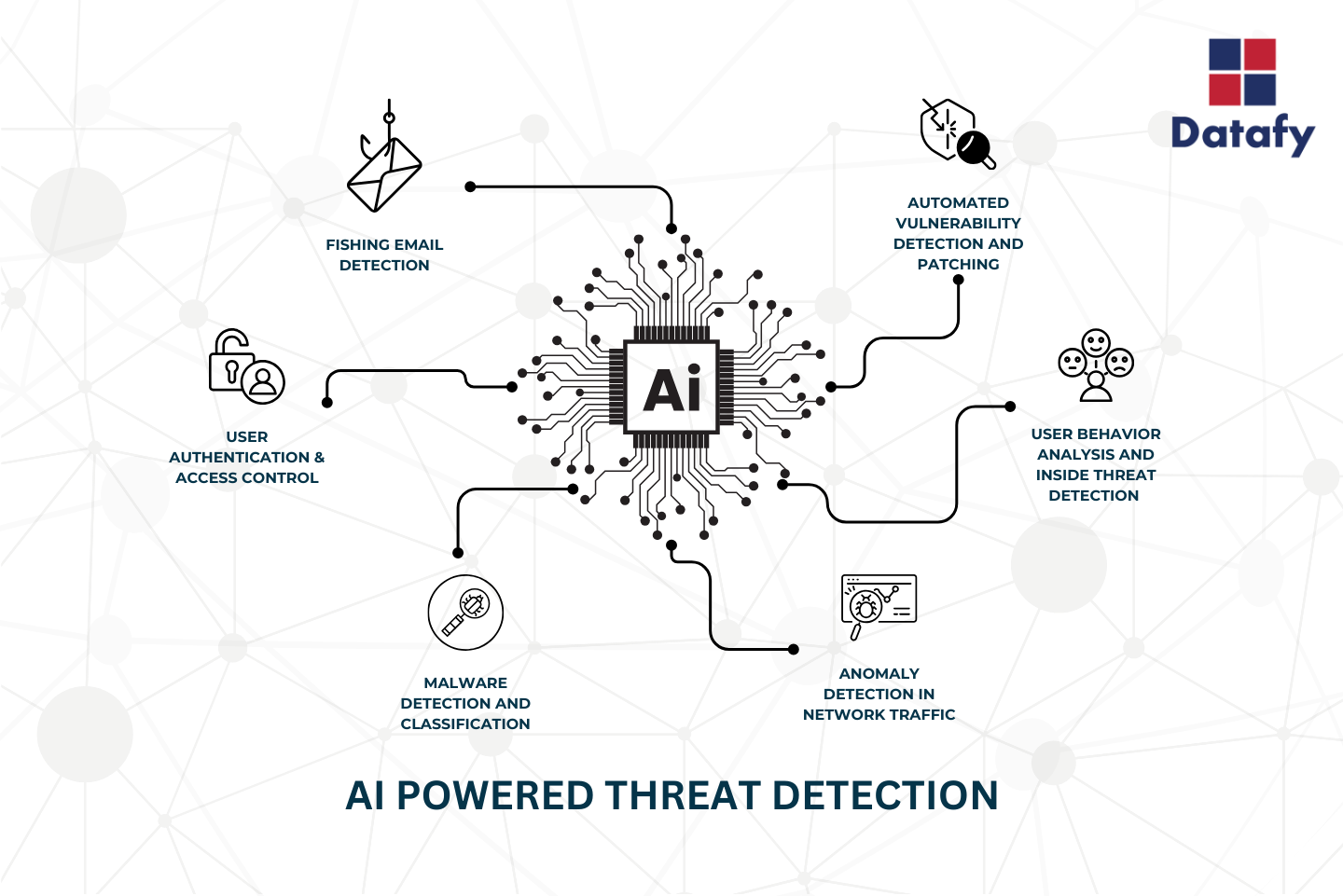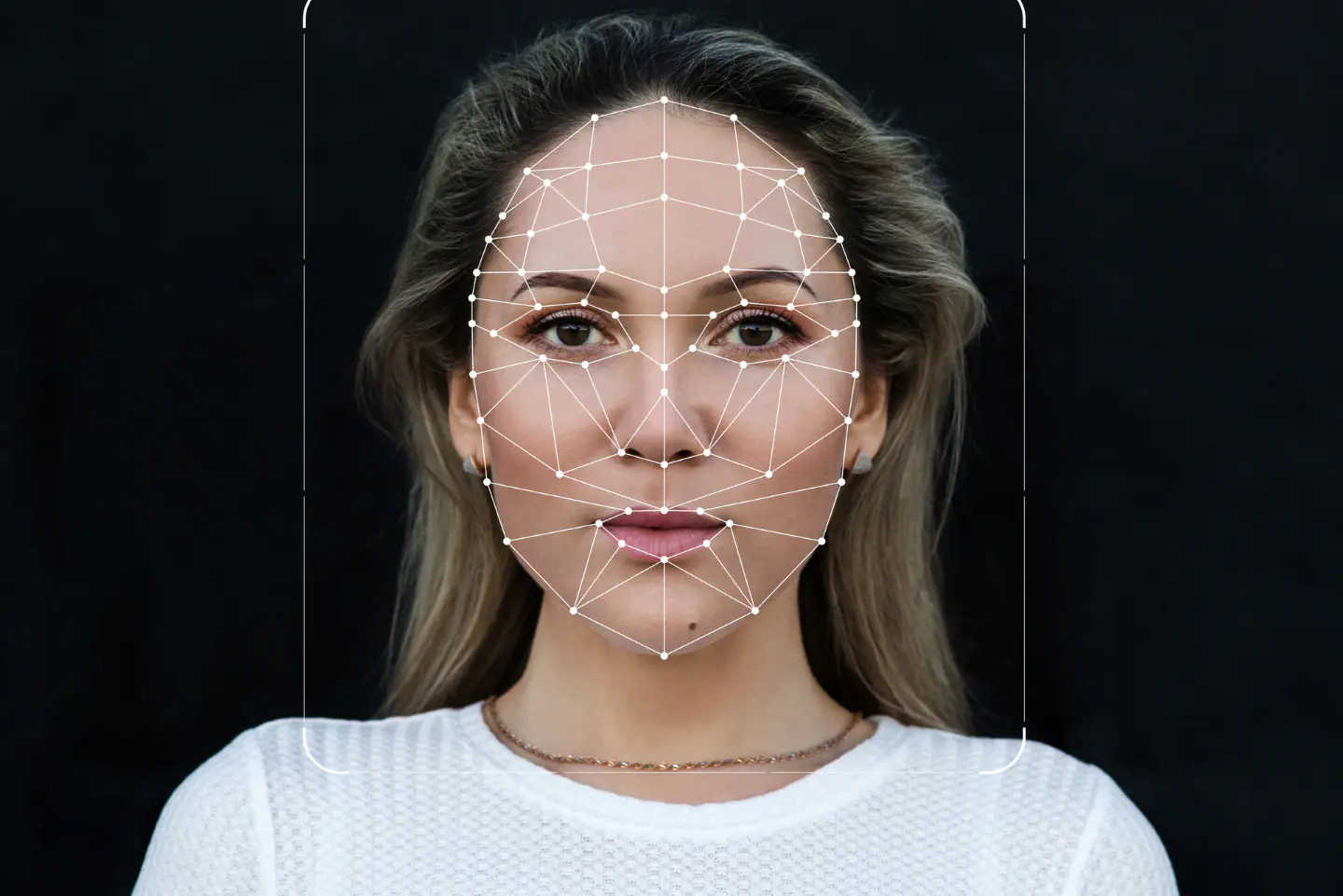Proactive Threat Detection, Prevention, and Response
In today’s rapidly evolving digital world, cyber threats are growing in complexity and scale. From ransomware attacks to sophisticated phishing schemes, organizations are constantly at risk. Traditional cybersecurity measures, while still important, often fall short in addressing the dynamic nature of modern threats. Artificial Intelligence (AI) – a transformative force that’s revolutionizing how companies detect, prevent, and respond to cyberattacks.
AI-driven solutions are not just enhancing existing security frameworks; they are redefining them. By leveraging machine learning, predictive analytics, and automation, organizations can build a more resilient defense posture. In this blog, we explore how AI is transforming the
cybersecurity landscape, the opportunities it presents, and how businesses like yours can harness its potential with support from Datafy.
AI-Powered Threat Detection: Speed and Precision Redefined
Traditional security systems rely heavily on rule-based algorithms and predefined signatures. While effective to some extent, they often lag in identifying new or evolving threats. AI changes this game by introducing machine learning models that continuously learn and adapt to new data patterns.
Machine learning enables systems to detect anomalies in real-time by comparing current behavior against historical baselines. For instance, if an employee’s credentials are used to log in at an unusual time or from an unrecognized device, the system flags it immediately. Unlike manual monitoring, AI systems work 24/7, ensuring faster detection and reducing the window of vulnerability.
By identifying these subtle behavioral anomalies early, AI prevents potential breaches before they escalate, saving businesses from costly downtimes and reputational damage.

Curious how AI can assess your cybersecurity risks?
Predictive Analytics: Anticipating Threats Before They Strike
Prevention is better than cure – and AI’s predictive capabilities embody this philosophy. By analyzing vast datasets, including past attack vectors, user behavior, and system vulnerabilities, AI can forecast potential attack scenarios.
These predictive models assess risk levels across various endpoints and suggest preventive actions. For example, if a particular segment of your network exhibits patterns that historically preceded an attack, AI can alert your IT team to bolster defenses in that area.
This proactive stance allows organizations to stay one step ahead of cybercriminals. With predictive analytics, security becomes a strategic function rather than just a reactive one.
Automated Incident Response: Cutting Down Response Time
In cybersecurity, every second counts. Delayed responses can mean the difference between containment and catastrophe. AI-powered automation dramatically shortens the time it takes to respond to threats.
AI systems can automatically isolate affected devices, revoke compromised credentials, or alert human analysts with recommended actions. This orchestration of response actions reduces human error and ensures consistent execution of security protocols.
Automation also empowers lean IT teams to handle a higher volume of incidents with greater efficiency. Instead of being overwhelmed by alerts, teams can focus on high-priority threats while AI handles the rest.
AI vs. AI: The Cybersecurity Battlefront
While AI offers incredible defensive capabilities, it’s important to acknowledge that cybercriminals are also leveraging AI to enhance their offensive strategies.
Malicious actors are deploying AI to craft more convincing phishing emails, bypass detection tools, and even probe systems for vulnerabilities autonomously. This arms race creates a new dimension of cybersecurity – one where defenders must continually evolve their AI systems to outsmart equally sophisticated threats.
To counter this, businesses need layered AI defenses that include behavior analysis, threat intelligence sharing, and continuous model retraining to adapt to emerging attack methodologies.
Ethical and Privacy Concerns: Navigating the Fine Line
Despite its benefits, AI in cybersecurity raises valid ethical and privacy concerns. AI systems rely on vast amounts of data, including user activity logs, emails, and communication patterns. While this data is crucial for detecting threats, it must be handled responsibly.
Organizations must implement strict data governance policies to ensure AI doesn’t inadvertently infringe on employee or customer privacy. Transparency in data usage and adherence to regulatory frameworks like GDPR and CCPA is non-negotiable.
Moreover, the algorithms themselves must be scrutinized to avoid bias or unintended consequences. As AI becomes more embedded in security operations, maintaining human oversight and ethical guardrails is essential.
What are different types of SOC Assessments?
How Datafy Can Help
At Datafy, we understand that the future of cybersecurity lies in intelligent, adaptive systems. Our AI-driven security solutions are designed to help businesses like yours stay ahead of threats, reduce response time, and enhance overall resilience.
Whether you’re looking to upgrade your existing security stack or explore AI-powered analytics for threat detection and incident response, our team of experts can tailor a solution to fit your needs.
Here’s what we bring to the table:
Cybersecurity isn’t just a technical issue – it’s a business imperative. With Datafy as your partner, you gain more than just tools; you gain a trusted advisor committed to your security success.
Final Thoughts
AI-driven cybersecurity is not a future concept – it’s happening now. As threats grow more complex, businesses must evolve beyond traditional defense mechanisms. By embracing AI technologies, companies can not only protect their networks but also transform security into a proactive, strategic advantage.
The key lies in choosing the right partner to guide you through this transformation. At Datafy, we’re ready to help you harness the full potential of AI to fortify your digital ecosystem.

